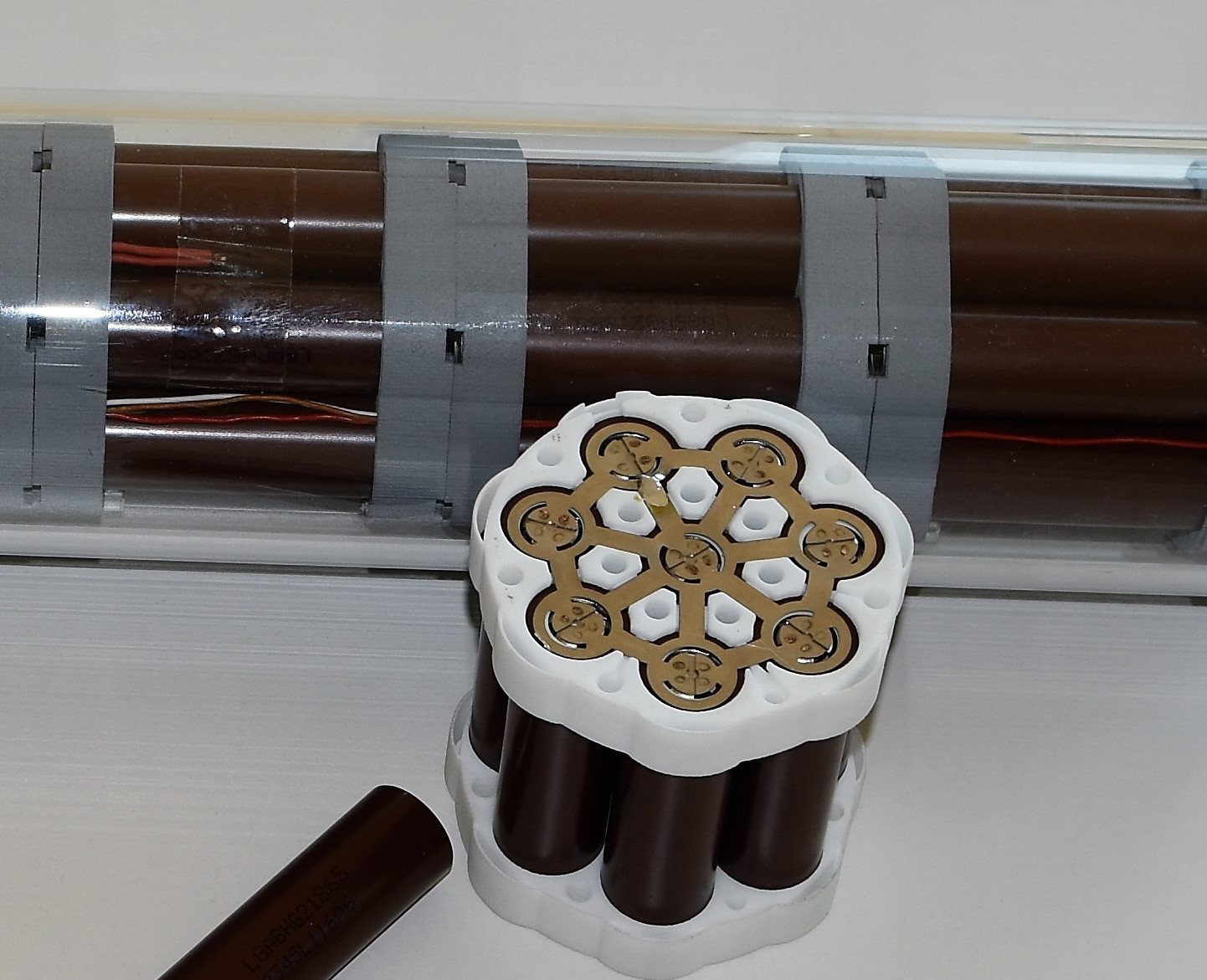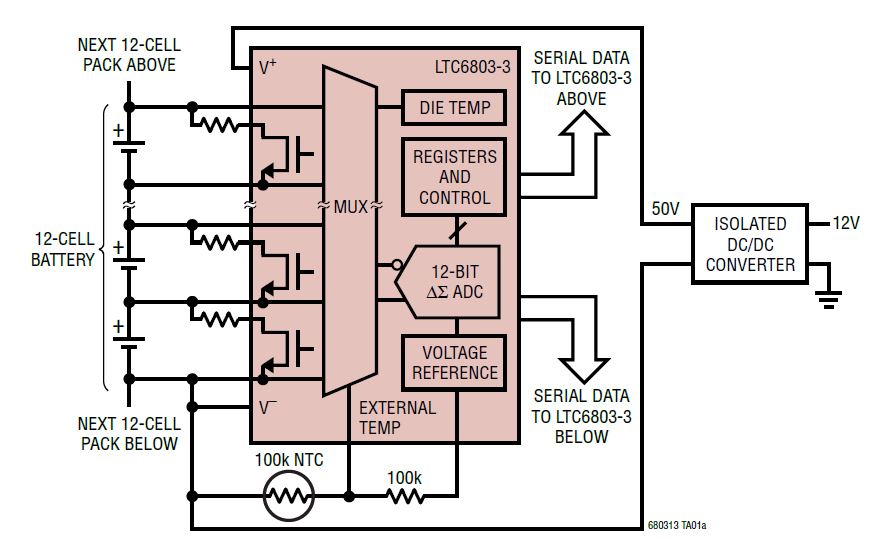electronics development, software optimization, service life assesment




Researchers at Fraunhofer LBF have developed a new battery management system for a pedelec battery, which uses special ultra-low-power electronics to determine the state of charge and state of health of the modules. It then sends a request to charge the battery directly to the user’s smartphone once a certain limit value has been reached.
The battery management system is a particularly important safety-relevant component and is an essential requirement for lithium-ion batteries. It monitors the temperatures and voltage at every cell level. Furthermore, the voltage is measured with a precise 16-bit AD-converter. This information is collected, processed and then evaluated by a microcontroller in a matter of milliseconds. This data is used to determine the state of charge and state of health of the entire energy storage system.
At the core of the particularly energy efficient electronic monitoring system developed at Fraunhofer LBF is a 32-bit ESP32 microcontroller with two processor cores and an open design for the construction and networking of network-based actuators and sensors. Despite its compact structure, the microcontroller is equipped with a large number of communication interfaces, such as 2.4 GHz WLAN, Bluetooth Low Energy (BLE) and common serial interfaces (SPI, I²C, CAN). For example, data can be sent to a smartphone using the Bluetooth connection. In this way, the data is made available to the user as status information.
Energy efficiency in standby mode represents an important factor for determining suitability for energy-sensitive applications. The ESP32 microcontroller is equipped with an additional ultra-low-power processor core, which can be used to perform computationally profound operations. This architecture was used by the researchers to collect and process continuous status information in relation to the pedelec battery. With an energy consumption of just 10 μA, the battery is protected from quick discharge, even after long periods of inactivity. However, at the same time, the cells are also permanently being monitored. In addition, the system supports an automatic standby mode, which the electronics are put into when they are not being used. The entire BMS can be activated within 150 milliseconds and used for the management of the storage system.
The goal, to be able to offer a cost-effective and low-weight solution for the continuous monitoring of lithium-ion batteries, was achieved through the programming of the microcontroller, as well as the whole development of the electronics and their integration in the Tubular Energy System (TES), a 1 kWh energy storage system to be directly integrated into the frame tubes. This means that data relevant to service life and reliability data can be provided without interruption, ensuring the optimum conditions for long-lasting and safe fun when riding modern e-bikes.